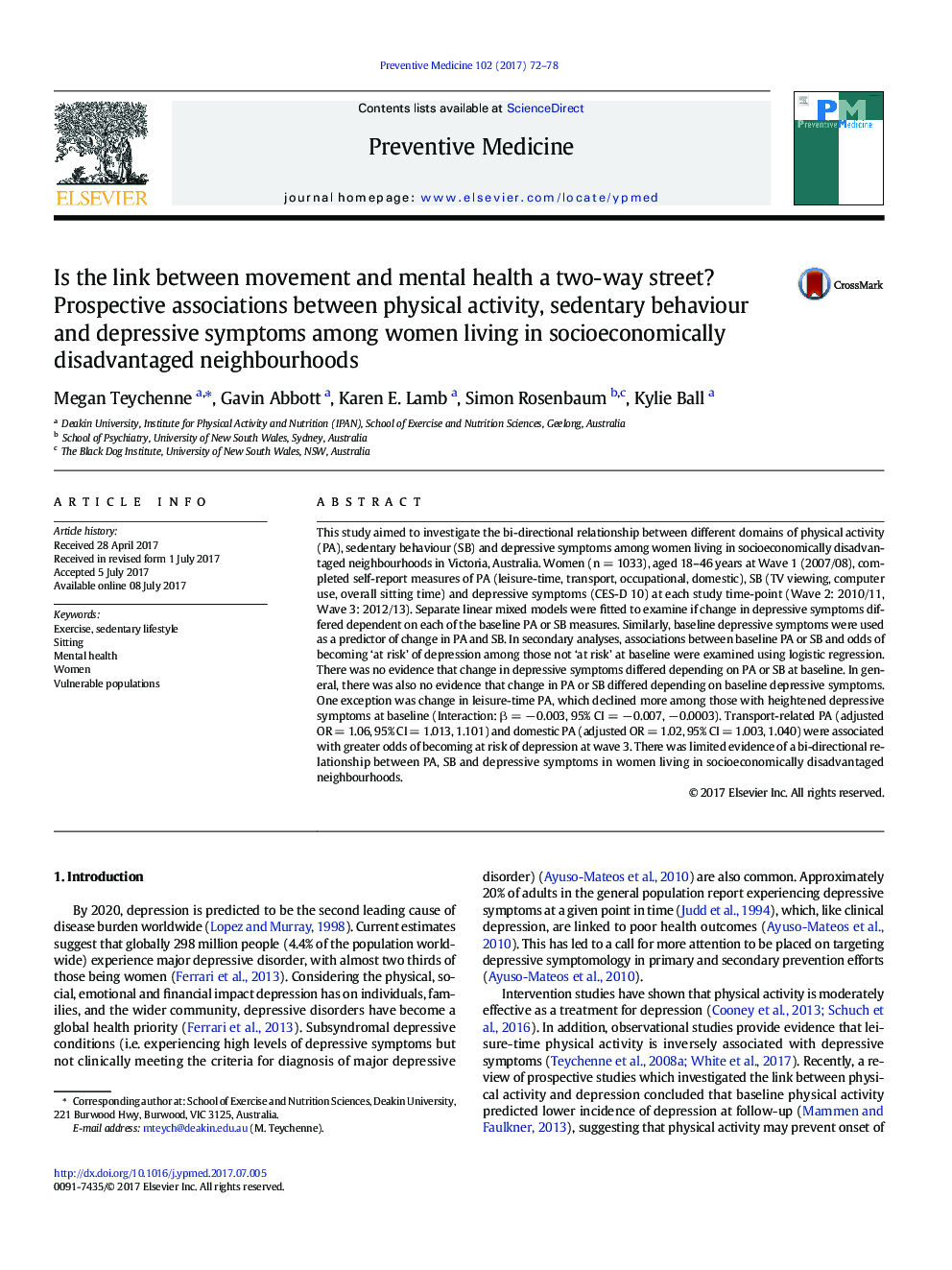| Article ID | Journal | Published Year | Pages | File Type |
|---|---|---|---|---|
| 5635571 | Preventive Medicine | 2017 | 7 Pages |
Abstract
This study aimed to investigate the bi-directional relationship between different domains of physical activity (PA), sedentary behaviour (SB) and depressive symptoms among women living in socioeconomically disadvantaged neighbourhoods in Victoria, Australia. Women (n = 1033), aged 18-46 years at Wave 1 (2007/08), completed self-report measures of PA (leisure-time, transport, occupational, domestic), SB (TV viewing, computer use, overall sitting time) and depressive symptoms (CES-D 10) at each study time-point (Wave 2: 2010/11, Wave 3: 2012/13). Separate linear mixed models were fitted to examine if change in depressive symptoms differed dependent on each of the baseline PA or SB measures. Similarly, baseline depressive symptoms were used as a predictor of change in PA and SB. In secondary analyses, associations between baseline PA or SB and odds of becoming 'at risk' of depression among those not 'at risk' at baseline were examined using logistic regression. There was no evidence that change in depressive symptoms differed depending on PA or SB at baseline. In general, there was also no evidence that change in PA or SB differed depending on baseline depressive symptoms. One exception was change in leisure-time PA, which declined more among those with heightened depressive symptoms at baseline (Interaction: β = â 0.003, 95% CI = â 0.007, â 0.0003). Transport-related PA (adjusted OR = 1.06, 95% CI = 1.013, 1.101) and domestic PA (adjusted OR = 1.02, 95% CI = 1.003, 1.040) were associated with greater odds of becoming at risk of depression at wave 3. There was limited evidence of a bi-directional relationship between PA, SB and depressive symptoms in women living in socioeconomically disadvantaged neighbourhoods.
Related Topics
Health Sciences
Medicine and Dentistry
Complementary and Alternative Medicine
Authors
Megan Teychenne, Gavin Abbott, Karen E. Lamb, Simon Rosenbaum, Kylie Ball,
